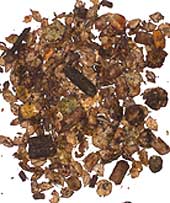
Storing Horse Feed - Keep Feed From Going Stale or Mouldy
Feeding your horse good quality feed plays a large part in maintaining your horse or pony in good health and peak condition - so it is important that it is kept in a way that will maintain its nutritional value.
THE IMPORTANCE OF STORING HORSE FEED PROPERLY
 Unless
horse feed is stored correctly even good quality ingredients will deteriorate
and be of little value to your horse, or even
worse may cause it to become ill.
Unless
horse feed is stored correctly even good quality ingredients will deteriorate
and be of little value to your horse, or even
worse may cause it to become ill.
Most feedstuffs that are fed to horses, such as oats, barley, alfalfa, chaff and equine mixes, will go mouldy or stale or after only a week if the sack of horse feed is left open to air and dampness - which is why horse feed manufacturers generally recommend that their products are stored in airtight containers.
Another very important reason to store feed well is to prevent a horse or pony gaining access to it and gorging themselves. The consequences of this can cause equine colic , laminitis or even death if a pony should get in and eat a lagre amout of dried sugar beet
Feed should be stored in a way that prevents vermin such as rats and mice getting into it. Rats and mice do not just eat up the feed, costing you money, but can also spread disease and infections to your horse or pony.
STORAGE AREAS FOR HORSE FEED
Storage areas for equine feed should be kept dry, well ventilated, clean and tidy.
Keeping the feed storage area swept clean will make it less attractive to mice and rats - also consider placing mice and rat traps in your feed room or keeping a stable cat to kepp the mouse population down.
Sacks of equine feed should be stored out of direct sunlight and stacked on pallets to help keep damp and moisture out.
Unopened bags of horse feed can be stacked on pallets. This will keep them off damp ground and also allow some air to circulate. Having sacks of feed raised off the ground will also allow you to spot any tell-tale little signs of mouse or rat activity if any small piles of grain start to appear under the pallets. Also try to keep feed sacks away from damp walls.
If you buy many sacks of horse feed at one time in bulk, stack these so that you can see when the expiry, sell by, or best before date is. This will enable you to use up the oldest feed first and avoid wastage.
STORING OPENED SACKS OF HORSE FEED
Once sacks of feed have been opened, keep them in a rat and mouse proof container. Galvanised feed bins or dustbins are ideal for this.
Some horse owners store feed in plastic dustbins or trash cans - but rats and mice will evetually chew their way into these.
Take care to tightly reseal any tubs of equine feed supplements to retain their freshness. It may be a good idea to store plastic tubs of supplements inside a metal container as mice and rats will often chew through plastic containers.
STORING HORSE FEED IN OLD CHEST FREEZERS
Old open top chest freezers also make good feed storage bins
If you do use one of these to store your feed - always use up the old feed and clean the bin before added any newly opened sacks of feed. This will avoid the risk of any mould developing.
As these chest freezers are usually airtight do make sure that there is no chance of a child, or even the stable cat getting locked inside it.
SECURITY ON A FEED STORAGE SHED OR BUILDING
The feed storage area should be secure so that there is no chance of a horse or pony getting into it and feasting on large amounts of grain, or worse – sugar beet.